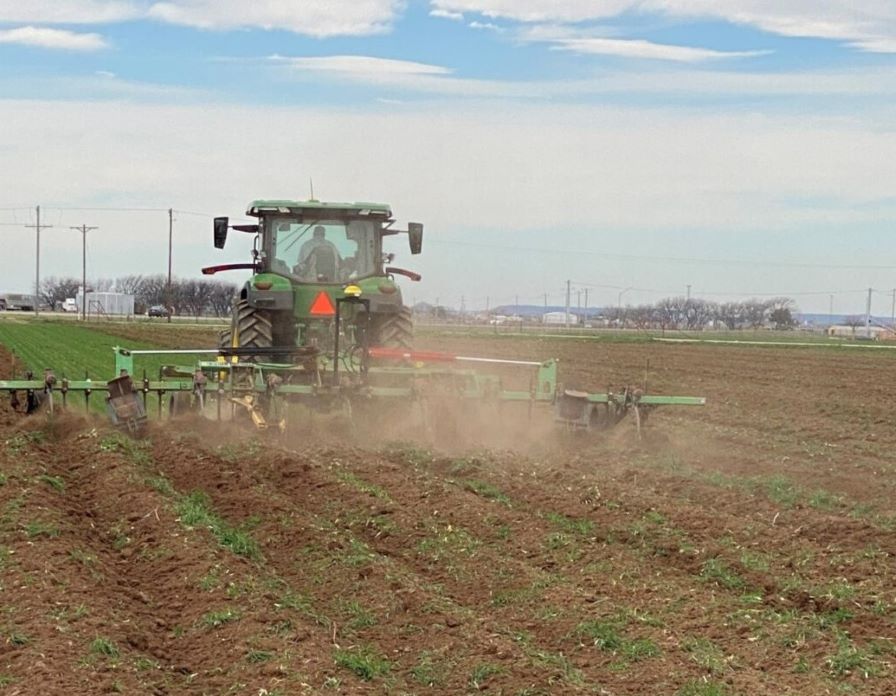Corn, Soybeans Threaten Cotton Acreage
It has become increasingly clear that many growers will increase corn and soybean acres this year at the expense of rice and cotton. These shifts seem logical given the price strength seen this winter in both corn and soybean new-crop futures. In early March, the November 2012 soybean contract on the Chicago Board of Trade was trading within pennies of $13 per bushel, and the September 2012 corn contract was over $6 per bushel.
The results of intense heat and drought over the past few months have been reflected in lower monthly USDA estimates of Brazilian and Argentine corn and soybean production. An already tight U.S. soybean balance sheet, and a tightening world soybean balance sheet, have in turn provided a floor for new-crop corn futures as the two crops battle for the same acres.
A year ago, it was the cotton market that worried about tight supplies. Prices surged to all-time highs, acreage expanded around the globe, world production hit record levels, demand declined, and today we are burdened with massive inventories that exceed 55% of projected use. Cotton market bulls are faced with a tremendous challenge.
Which brings us to the question: “How many cotton acres will we lose?” The National Cotton Council (NCC) has indicated from their producer survey that U.S. cotton acreage will decline 7.5% or by 1.1 million acres this year.
That equates to 13.6 million planted acres. Some private estimates peg 2012 U.S. acreage as low as 12.9 million. Furthermore, cutbacks of 7% to 10% are now anticipated in the world’s largest cotton-producing countries of China and India. Will the reduction in 2012 acreage be significant enough to at least support new crop prices at current levels?
Utilizing the NCC’s acreage and yield estimates for 2012, a reduction of 1.1 million planted acres is simply not enough to reduce U.S. ending stocks in the 2012/13 marketing year. Recall that old crop stocks currently reside at 3.8 million bales. However, this figure could drift closer to 3 million bales before the end of the marketing year depending on future import needs from China.
Weather is the biggest variable in any production forecast. The historic drought last year across the Southwest caused Texas growers to abandon roughly 60% of all cotton acres. The drought has not ended on the High Plains region of Texas and moisture levels are also a concern in the number-two cotton producing state of Georgia.
The NCC production figure is based on above-average abandonment of 20.3% and yields again being disappointing in key cotton production areas of the U.S. The current moisture conditions in Texas leave growers there with little alternative but to plant cotton. Thus, some well-timed rainfall in the Texas High Plains could make a significant impact on yields and total 2012 production could just as easily be pushed toward 20 million bales. Without question, production estimates today are purely guesses.
However, production is only one variable in the price determining equation; demand is the other. A simple increase in production this year can be tolerated as long as there are offsetting increases in consumption. A worst-case scenario occurred in 2011/12 with a sharp increase in production and a corresponding decline in global mill use. However, the possibility of another 7 million bale increase in production is slim in 2012/13. The biggest challenge will likely lie in replacing lost demand and specifically lost market share to synthetic fibers.
As has been the case for the past decade, U.S. domestic use of cotton is not growing. Therefore, to keep ending stocks from becoming too burdensome, exports will have to do the heavy lifting. As alluded to, increases in global demand in the months ahead will be questionable. In the current marketing year, U.S. cotton exports have been supported by large Chinese purchases to rebuild state reserves. It’s unlikely that similar purchases by China will be necessary in 2012/13. Without production problems or an export ban in India, significant improvement in U.S. exports is hard to envision given the ample world supplies of cotton projected today.









